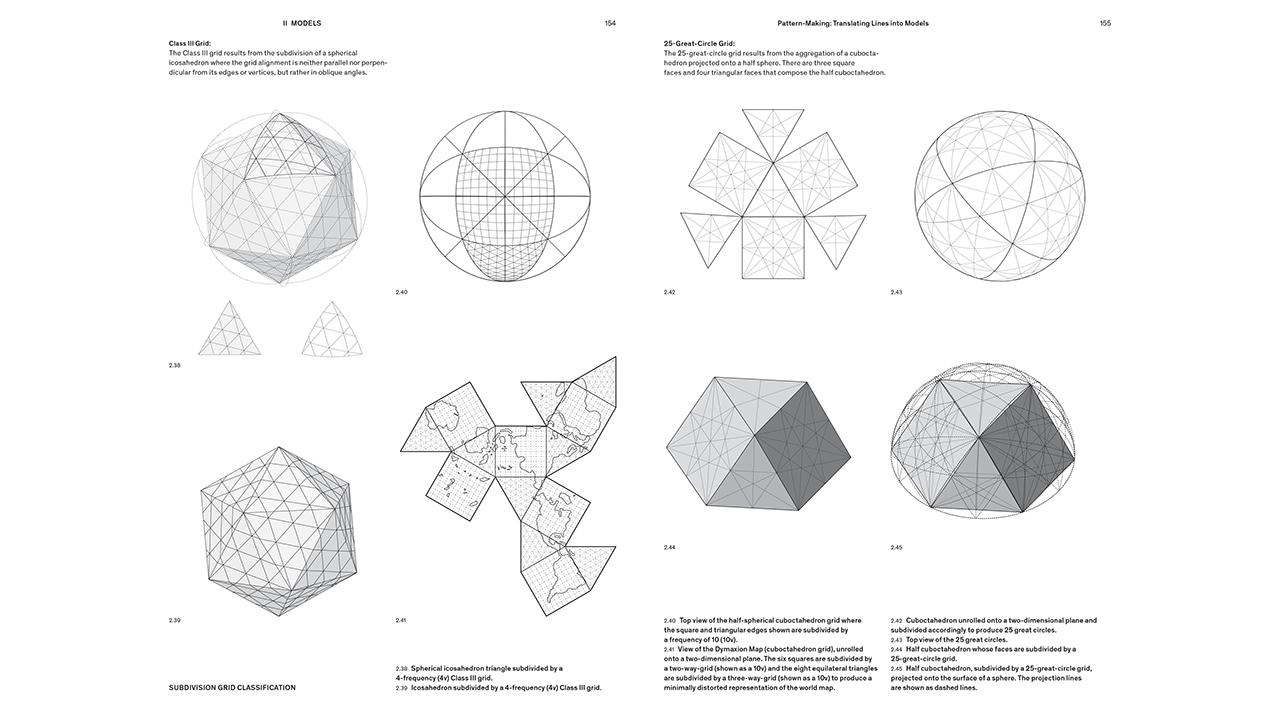
R. Buckminster Fuller
Pattern-Thinking
Pattern-Thinking reassesses the work of Buckminster Fuller—unique hybrid between theoretician, architect, designer, educator, inventor, and author—as advancing contemporary models of design research, practice, and pedagogy. Drawing extensively on Fuller’s archive, the book follows his unique process of translation between the physical and conceptual dimensions of design, to redefine our understanding of the relationships between geometry, structure, language, and intellectual property.
Rather than being organized around a chronology of distinct narratives, Pattern-Thinking follows these parallel explorations as the basis for Fuller’s artifacts and inventions. In the space between lines, models, words, and patents, it traces his ambition to measure physical experience in an ever-expanding pattern of relationships, while coordinating these into a conceptual network of words and concepts that shape the basis for his thinking. Advocating a multidisciplinary and political perspective, Fuller’s transversal logic expands the knowledge base of contemporary models of design, which seek to find broader participation and to address new publics.
Pattern-Thinking reassesses the work of Buckminster Fuller—unique hybrid between theoretician, architect, designer, educator, inventor, and author—as advancing contemporary models of design research, practice, and pedagogy. Drawing extensively on Fuller’s archive, the book follows his unique process of translation between the physical and conceptual dimensions of design, to redefine our understanding of the relationships between geometry, structure, language, and intellectual property.
Rather than being organized around a chronology of distinct narratives, Pattern-Thinking follows these parallel explorations as the basis for Fuller’s artifacts and inventions. In the space between lines, models, words, and patents, it traces his ambition to measure physical experience in an ever-expanding pattern of relationships, while coordinating these into a conceptual network of words and concepts that shape the basis for his thinking. Advocating a multidisciplinary and political perspective, Fuller’s transversal logic expands the knowledge base of contemporary models of design, which seek to find broader participation and to address new publics.
“Packed with illuminating archival illustrations, this deep dive into one of the 20th century’s greatest design-thinkers covers everything from his analysis of the cornea of the human eyeball to international economic structures.”
– Los Angeles Times
«Pattern Thinking nimmt den Leser mit Fullers Arbeitsweise zu entdecken und lehrt ihn gleichzeitig fern der ausgetretenen Denkmuster neue Verknüpfungen zu finden.»
– Archithese





















